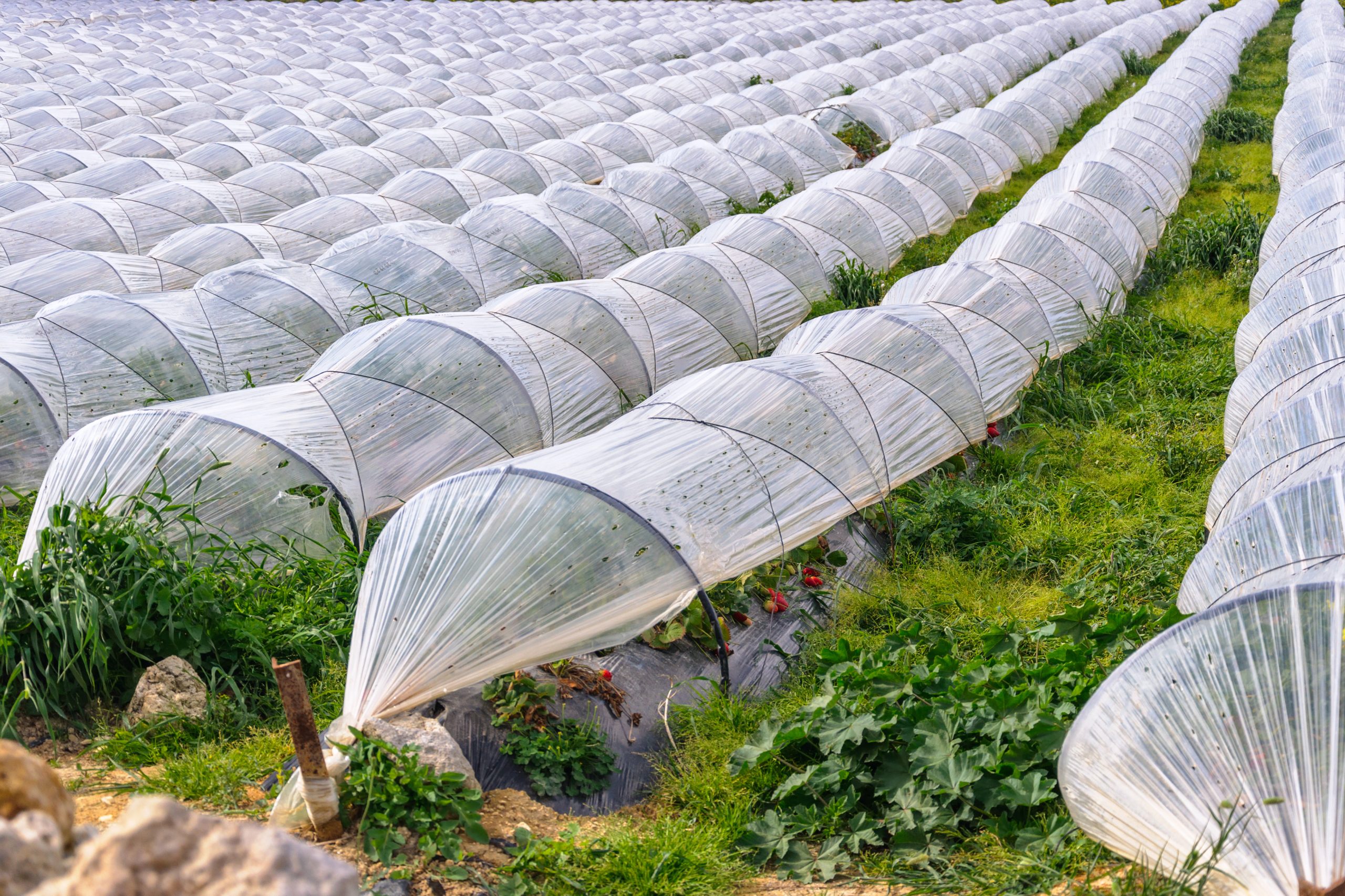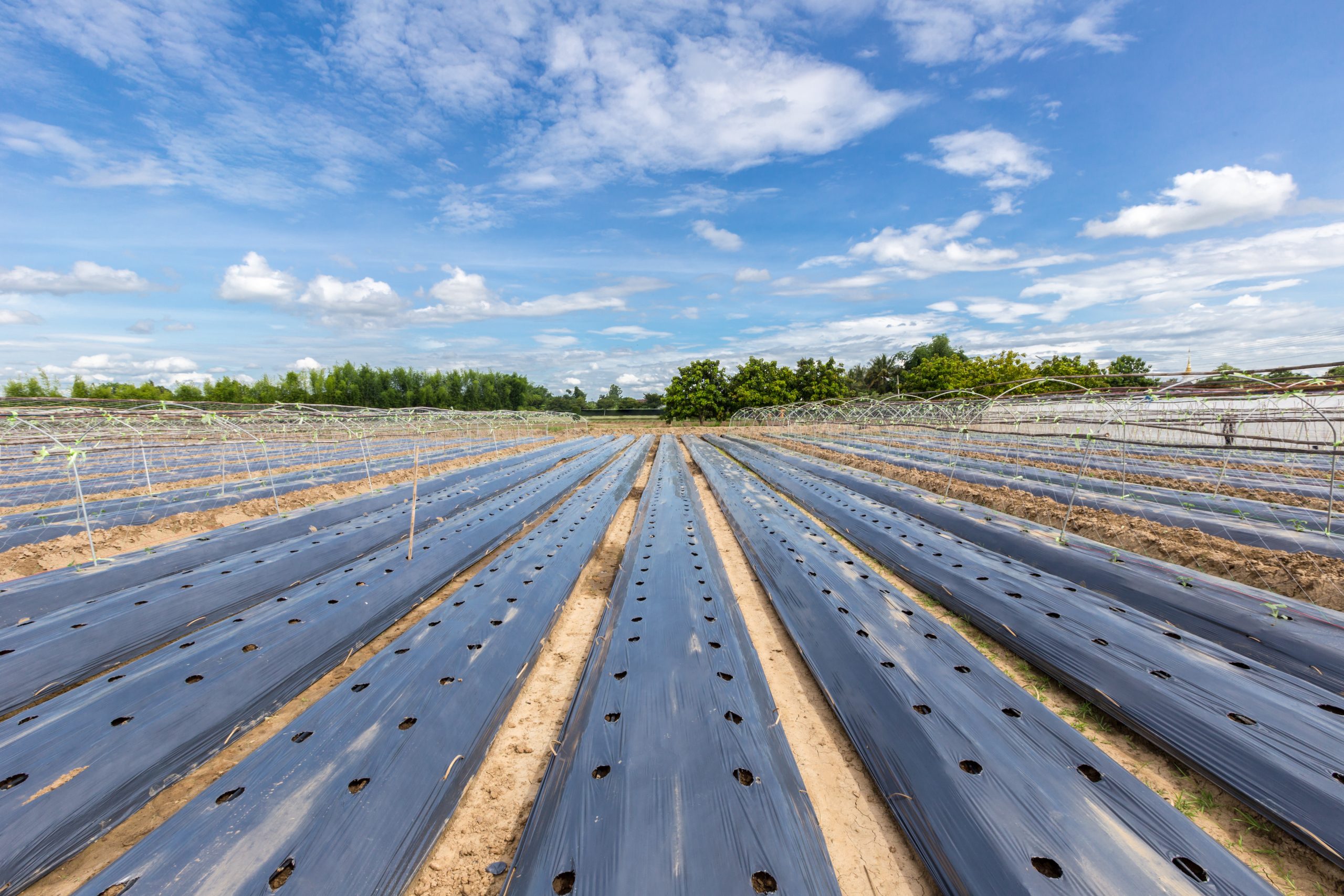Mulch vs Tunnel Films – The Farmer’s Guide to Mulch and Tunnel Films: Key Differences Explained
If you’ve spent time in agriculture, you know that the right protective films can make a huge difference in crop health and yield. But with so many types on the market, it’s not always clear which one is best for your farm. Two of the most common — and sometimes confused — are mulch films and tunnel films.
At first glance, they may look similar. Both are made of UV-stabilized plastic. Both are designed to help plants thrive. Yet, they work in very different ways. Let’s break down how each one functions, when to use it, and why farmers in Jordan and beyond often rely on both.

What Mulch Films Do
Think of mulch films as a protective blanket for the soil. Farmers lay them directly over the ground before planting, with small holes cut out for seedlings to emerge.
By covering the soil, mulch films:
- Hold in precious moisture, reducing the need for frequent irrigation.
- Stop weeds from sprouting by blocking sunlight.
- Keep the soil at a more stable temperature, which is especially helpful during seasonal changes.
- Protect the soil from erosion caused by rain or wind.
They’re particularly popular with vegetable and fruit growers — tomatoes, cucumbers, melons, strawberries — who want to give their crops a strong foundation.

What Tunnel Films Do
Tunnel films, on the other hand, don’t go on the soil — they arch above the plants. Imagine a row of crops covered with a long, low “tunnel” of plastic film stretched over hoops. That’s a tunnel film system.
These films create a microclimate around the plants, protecting them from the outside world. Farmers use them to:
- Guard against frost, heavy rain, or strong winds.
- Keep pests and birds away without chemicals.
- Extend the growing season, allowing planting earlier in spring and harvesting later in fall.
- Maintain more consistent humidity and temperature around delicate crops.
Tunnel films are especially useful for seedlings and high-value vegetables that need extra protection during critical growth stages.
A Side-by-Side Comparison
| Mulch Films | Tunnel Films | |
| Where it goes | Directly on the soil | Above plants, stretched over hoops |
| Main purpose | Improve soil environment | Create a protective microclimate |
| Helps with | Moisture retention, weed control, soil temperature | Weather protection, season extension, pest control |
| Best for | Vegetables and fruits in open fields or greenhouses | Seedlings, leafy greens, high-value crops |
Which One Should You Choose?
The answer depends on what problem you’re trying to solve.
- If your biggest challenge is soil management — weeds, water, temperature — mulch films are the way to go.
- If your challenge is weather and pest protection, tunnel films will make a bigger impact.
In fact, many successful farms use both together: mulch films on the soil to create the right conditions for roots, and tunnel films above the plants to shield them from external stress.

Why This Matters for Farmers
Farmers face unique pressures: hot summers, water scarcity, and unpredictable seasonal changes. Mulch films can help conserve irrigation water, while tunnel films make it possible to extend growing seasons and deliver fresh produce when demand is high.
Together, these tools don’t just protect crops — they protect farmers’ livelihoods.
Final Thoughts
Mulch films and tunnel films may look like similar products at first glance, but they play very different roles in agriculture. One focuses on the soil, the other on the plant canopy. When used wisely — often in combination — they can dramatically improve crop quality, yield, and efficiency.
For farmers, investing in the right protective films is an investment in productivity and resilience.
